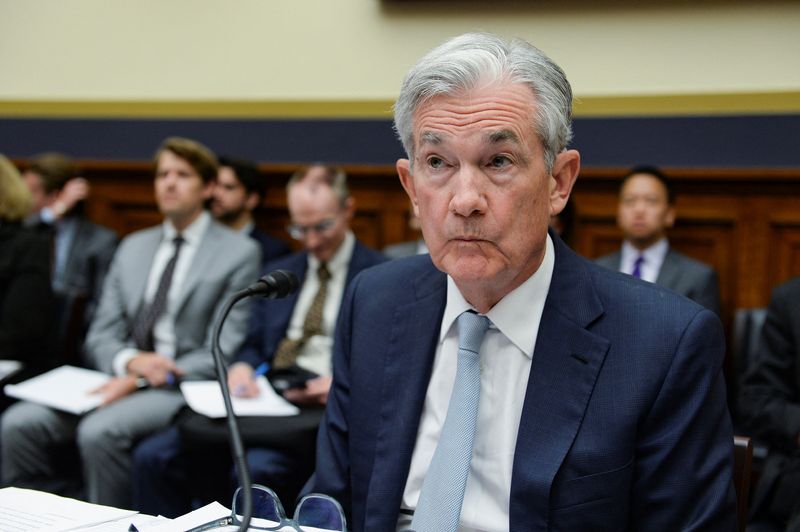By Michael S. Derby
WASHINGTON (Reuters) - Federal Reserve Chair Jerome Powell, leading a central bank faced with the swiftest rise in consumer prices in decades, ruled out on Wednesday any change in the central bank's inflation goal.
Powell, speaking at a press conference following a Federal Open Market Committee meeting where the officials lifted their overnight target rate by half a percentage point, was asked whether the Fed might consider moving its 2% inflation target up to a higher level.
"We're not considering that. We're not going to consider that. Under any circumstances," Powell said. "We're going to keep our inflation target at 2%. We're going to use our tools to get inflation back to 2%," he said, although he allowed "there may be a longer-run project" that could take a fresh look at the central bank's inflation goal.
The Fed adopted its 2% inflation target in 2012 amid a similar push by other major central banks, believing that it best defined price stability, which it is legally mandated to achieve. Officials have argued that the target level is the sweet spot: Any lower and price pressures might run the risk of tipping into negative territory, or what economists call deflation, which is damaging to an economy.
The Fed has been pushing its short-term rate target up aggressively this year to lower inflation and has raised it from near zero levels in March to the current range of between 4.25% and 4.50%. Powell said the Fed will continue to press forward with increases and officials have penciled in a 5.1% funds rate for next year, and a lower one the year after.
According to their forecasts, the Fed expects the path of rate rises it believes it needs to cool inflation will drive up unemployment and weaken the economy next year. "I wish there were completely painless way to restore price stability. There isn’t, and this is the best we can do," Powell said.
Some economists have argued that if the Fed were to raise its inflation target from 2% it would not have to raise rates as much, in turn leading to less labor market pain.
Fed officials have generally resisted any move to change their target. Aside from believing it's the right level to aim for, changing the target carries credibility risks for the Fed. If it changes its target in the face of adverse inflation data, it could call into question the Fed's commitment to lowering price pressures, and create the risk the target might be a moving goalpost.
A Fed effort to modestly redefine its inflation target, announced in August 2020, swiftly ran into trouble. Then, officials said they would target 2% inflation on average, and in that time of extended low inflation, the Fed said it would likely keep rates lower for longer and would not act to preempt inflation just because the economy runs hot.

In short order, that evolution of the Fed's inflation target was tested by an inflation surge driven by pandemic-related disruptions, government stimulus efforts and geopolitical troubles. Some think the Fed's new thinking on how to pursue the inflation target may have caused officials to move too slowly to combat the soaring inflation.
Powell, in an appearance on Nov. 30, defended the new system but acknowledged that in hindsight he would have spoken differently about the conditions needed to get the Fed to raise rates, which at that time where at near zero levels.